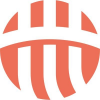The Test Tribe: TTTribeCast Webinar by Jon Duncan Hagar
The Internet of Things (IoT) and Artificial Intelligence (AI) systems have become hot growth areas in techno-capitalism, which will drive the modern economic world. While these two are different, they rely on each other and share similarities in software Verification, Validation (V&V) and testing. Engineers are busy creating a connection to the internet for nearly every electronic device, meaning that many “”things”” or devices that were never before connected will now be. This situation presents a “”boundary issue”” of where to stop testing for teams. Many IoT managers and stakeholders may wish to limit the testing of these devices or their connections to control costs by only covering the IoT device software. Their rationale being the “”thing”” or “”system”” may be well known, and only the IoT software is “”new””. While at the same time, AI is spreading to every system, particularly the area of IoT, because of their high volumes of data generation and the need for test automation. This presentation considers several important system-level V&V/test activities and the tester’s technical skills to support the growing world of software system testing.
In most cases, the IoT device, software, edge interfaces, and finally, the cloud elements of the IoT system will need to be tested. Simplistic, manual testing of IoT needs to evolve into complete Verification and Validation (V&V) during the system lifecycle while often including levels of independence in the test team organization. Testing activities such as analysis, reviews, inspections, modelling, structural tests, functional tests, security tests, AI-test automation, etc., will need to be appropriately budgeted and then allocated with testing plans and strategies to address the risks of IoT and AI systems testing beyond just the IoT device itself. Once testers move from basic IoT testing, AI becomes a consideration that must be included in the test planning and V&V activities.
Traditional manual testing will have limited application in these new domains compared to test automation using Artificial Intelligence (AI) and data analytics (“”a method of logical analysis of large amounts of information,”” Merriam-Webster) to drive the V&V/test evaluations. Testers will benefit from learning and practicing advanced engineering skills to support new testing activities. Testers must build on their traditional software skills and then expand their use of newer software, hardware, and system engineering concepts. Test practitioners that can master advanced testing skills such as automation and AI will be in demand while finding the new IoT/AI world challenging, exciting and fun.
- Things (IoT) and Artificial Intelligence (AI) systems have become hot growth areas in techno-capitalism
- Testing IoT and AI Software System
- Skills for Testers of IoT/AI systems

